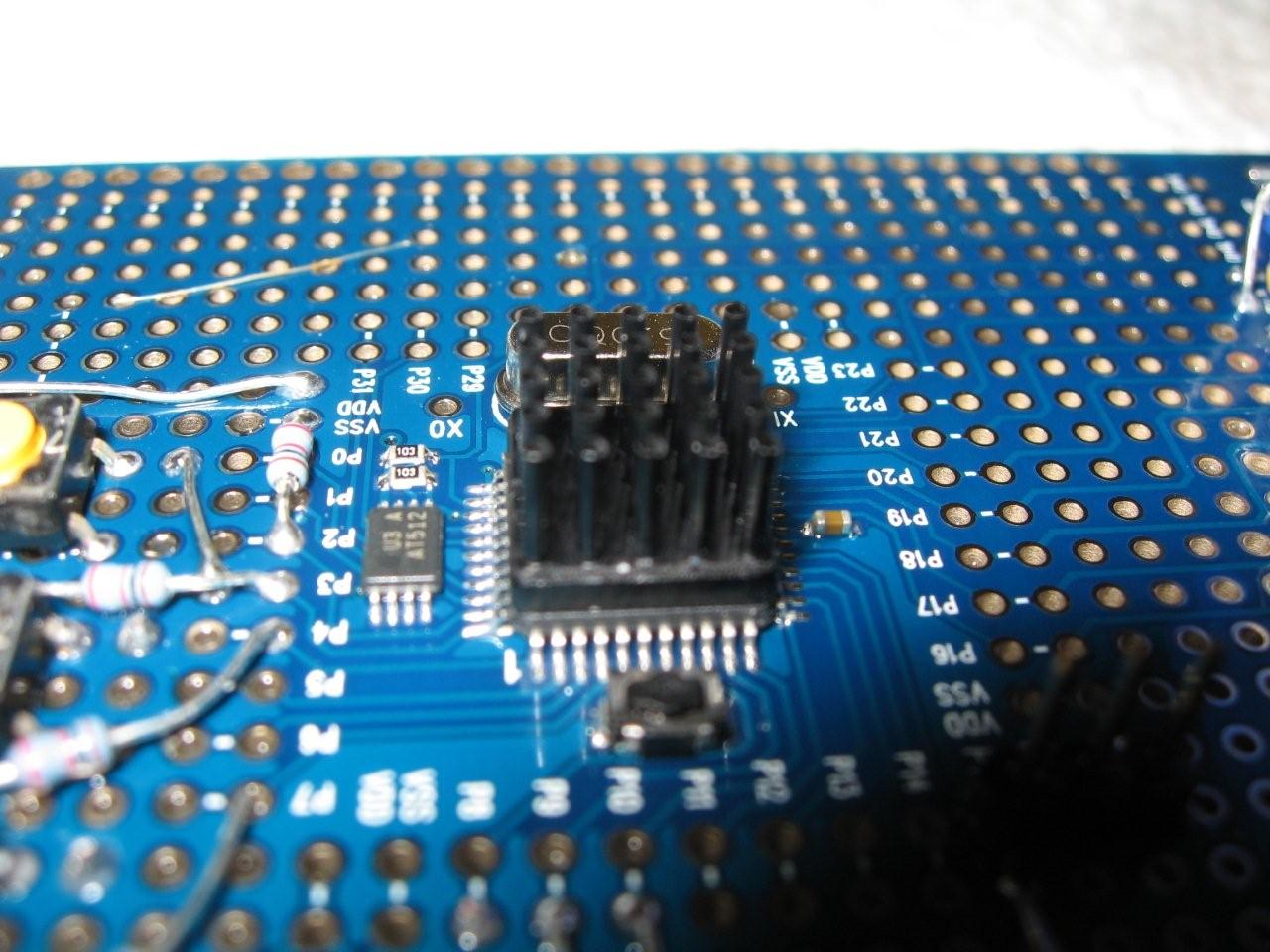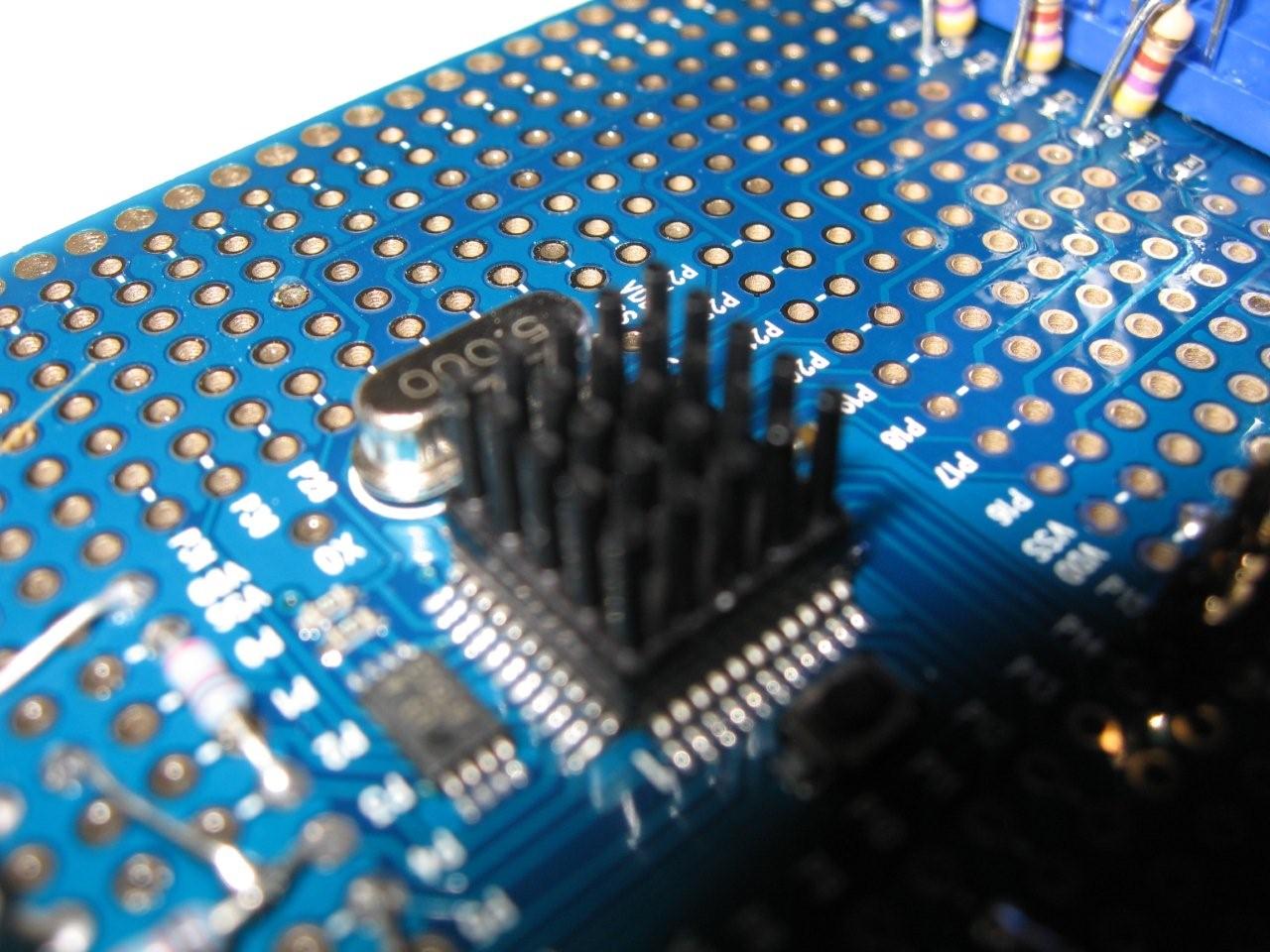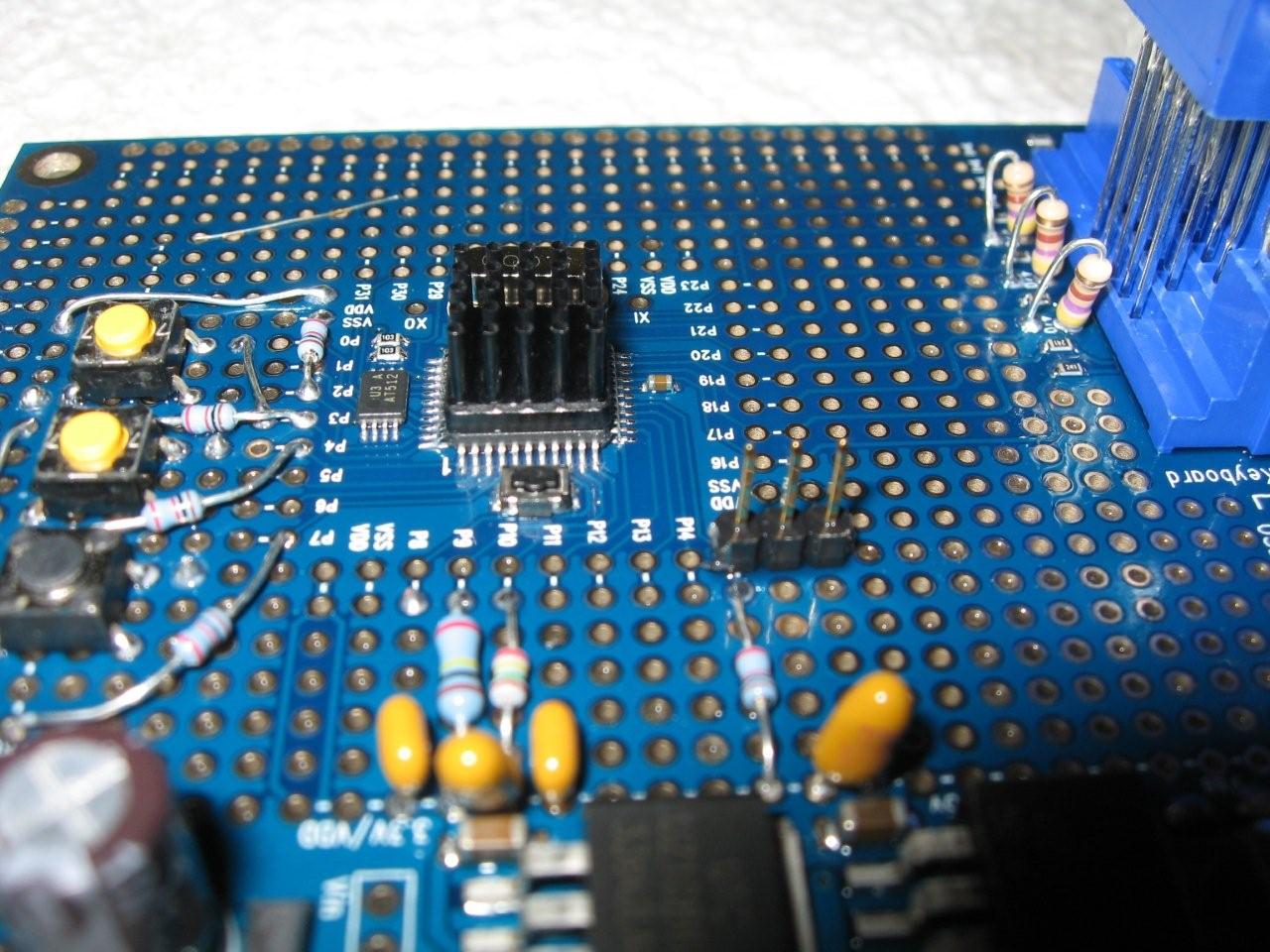Cool Prop Heat Sinks
My friend that works at the local electronics parts store found these for me. I thought they were quite cool even if the prop will run at 80 Mhz basically until the solder melts off the chip. Sorry if you all have seen then before. Maybe someone doing something with over clocking might want to get some, (BTW anyone know off hand what the fastest someone has over clocked a prop to and kept it alive?)
·
Thanks again,
TJ
·
Thanks again,
TJ





Comments
I've heard 100 mhz can be reached without any (or at least not much) stability loss, but I don't think it's at all heat-related.
read this ..
http://forums.parallax.com/showthread.php?p=616057
Regards,
········· John Twomey
▔▔▔▔▔▔▔▔▔▔▔▔▔▔▔▔▔▔▔▔▔▔▔▔
'Necessity is the mother of invention'
a hot chip can't cause the prop to twist, much like those christmas decorations with the candles
spinning a prop that are so common in Germany.
It would give a nice visual indication of the heat of the chip as well.
▔▔▔▔▔▔▔▔▔▔▔▔▔▔▔▔▔▔▔▔▔▔▔▔
Searider
This lets you see what QuattroRS4's linked thread is talking about...
▔▔▔▔▔▔▔▔▔▔▔▔▔▔▔▔▔▔▔▔▔▔▔▔
Whit+
"We keep moving forward, opening new doors, and doing new things, because we're curious and curiosity keeps leading us down new paths." - Walt Disney
Post Edited (Whit) : 8/2/2008 1:24:03 AM GMT
Regards,
John
▔▔▔▔▔▔▔▔▔▔▔▔▔▔▔▔▔▔▔▔▔▔▔▔
'Necessity is the mother of invention'
It doesn't even get that hot in Louisiana in August.
▔▔▔▔▔▔▔▔▔▔▔▔▔▔▔▔▔▔▔▔▔▔▔▔
Whit+
"We keep moving forward, opening new doors, and doing new things, because we're curious and curiosity keeps leading us down new paths." - Walt Disney
"What is the need of running the chip outside of its design specs and risking reliability issues and or failures"?
I am still choking on the reason why over clocking the Prop-96 works given by the manufacturer.
I mean if you need that type of speed then change to a different chip.
Just a thought.
The reason to over-clock is simply to make it go faster, to allow it to do more in a given time. Some people may want that, some may need it to make their product viable.
Drop in a 7.3728MHz crystal and you get a near +50% speed improvement. In some cases that's definitely a Good Thing (TM).
Over-clocking is always a balance between getting more out of a chip and the greater risk of failure or extra engineering to ensure it can run out of standard spec. Just like tweaking cars and boosting BHP, there's not necessarily a need, but some people may desire it, and it may make a product more marketable than another.
The argument given by 4D Systems for the oLED-96-PROP was valid, even though it wasn't always as successful as hoped. Having the display more responsive is definitely a good thing, most people would prefer faster than slower.
hippy, their argument relates to PCB design practice i.e. power supply and OLED bus signals and yeah Ok over clocked more current etc but still as you mention "even though it wasn't always as successful as hoped."
QED
The graphs on the datasheet show (through testing) that the chip can go a lot faster if it's refrigerated and run at voltages close to the the upper limit (before damage occurs). Refrigeration is expensive. Very tight control of operating voltage (to prevent damage) is expensive. The 4D Systems thing was just that they were recommending the use of the Propeller under circumstances where most chips would work fine under typical office conditions with typical supply voltages, but Parallax's documentation showed that some chips, particularly in warm, but not unreasonable environments with low, but valid supply voltages would fail. If that were documented by 4D Systems, customers could choose to use the lower clock speed or maybe add a fan where they might not have. Maybe 4D Systems could test the supply voltage and rework / reject assemblies with marginally low regulator output voltage.
4D Systems noted, quite rightly and as confirmed by Parallax, that in the right circumstances the clock speed can be higher than spec without failure.
4D Systems then attempted to create such an environment which to a good extent worked but not in all cases. Their rationale was fine with respect to over-clocking per-se, the explanation for their design to support over-clocking seemed plausible to me ( I'm no expert ), however, it turned out that their design was not as robust as required for all situations. Had they done it differently it would have been a complete success, as it is it was only a partial success.
They had the principles right but got the implementation wrong or, more correctly, not quite good enough for all situations. In the right situations it is reported to work well when over-clocked.
I cannot fault 4D Systems for their attempt to over-clock; they took the right approach with a solid engineering rationale and while not a complete success it was not a complete failure either.